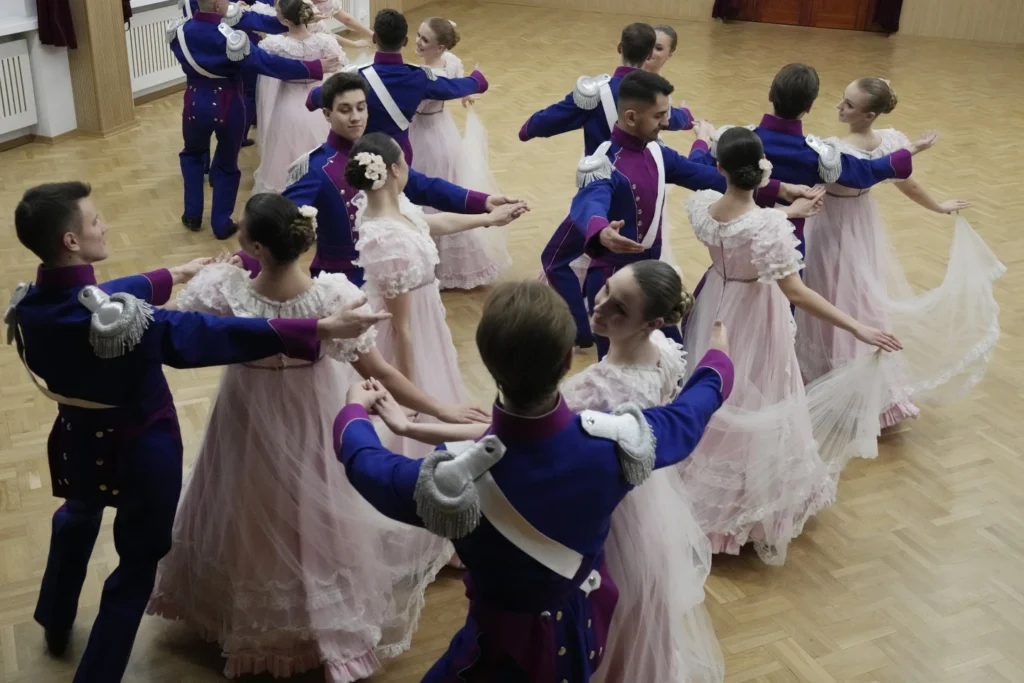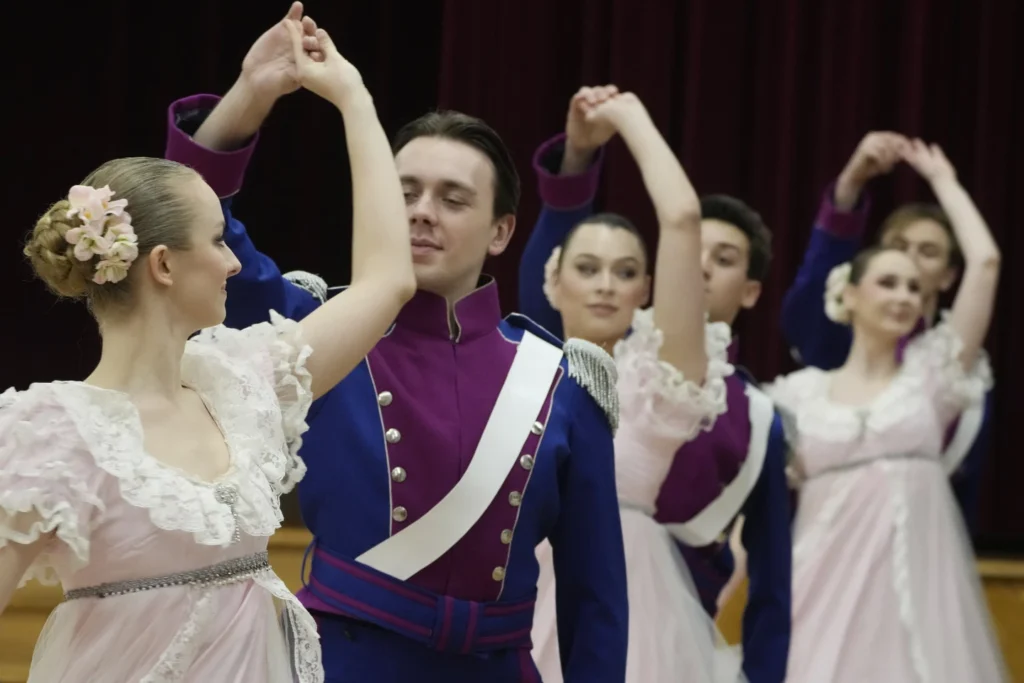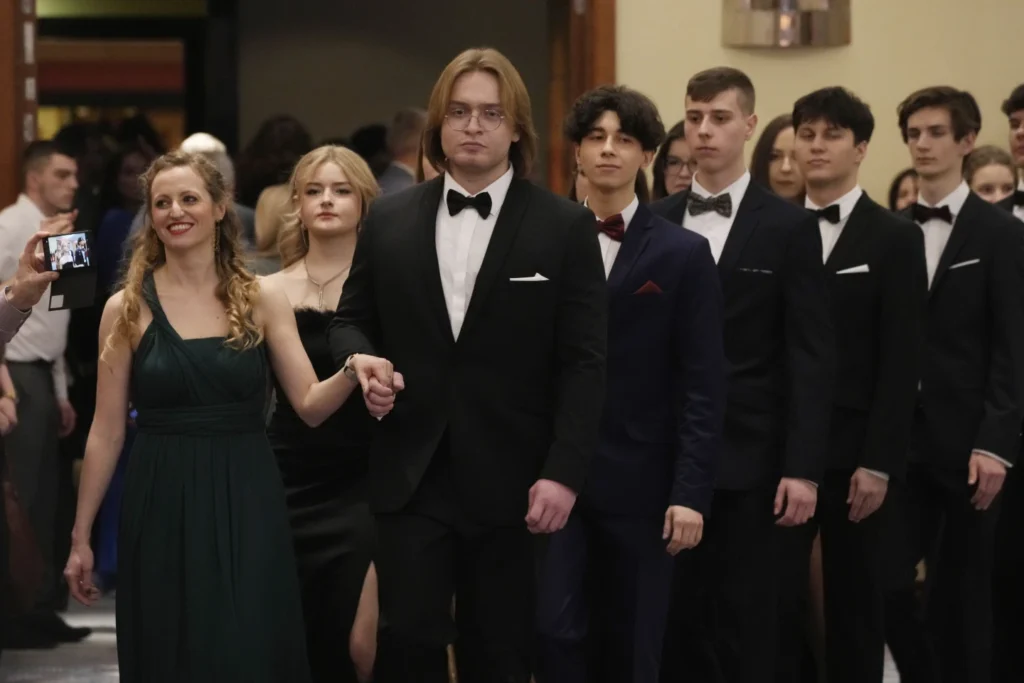Once forbidden by authorities dispatched from Moscow, Poland’s majestic polonaise dance, which nourished the country’s soul even throughout the sad years of its partition, is now recognized by UNESCO.

This 18th-century dance has been played at aristocratic balls and hamlet gatherings, inspiring composers like Johann Sebastian Bach and Frederic Chopin. It remains a popular choice for major national events such as graduation balls and wedding receptions.
On December 5, this living practice was added to the UNESCO List of Intangible Cultural Heritage as a “form of joint celebration,” which “commemorates important moments in family and community life and symbolizes cooperation, reconciliation, and equality.”
Poland’s Ministry of Culture and National Heritage, which petitioned for the inclusion of the dance on UNESCO’s list, stated that their campaign had widespread public support.
“Thousands of people on Facebook and other social media were supporting the (UNESCO) entry,” Joanna Cicha-Kuczynska of the ministry’s Monuments Protection Department told The Associated Press.
She stated that there is a large community, including entire families, who dance the polonaise and pass on the heritage. It is performed in pairs, with the first and most prominent pair leading and improvising various figures, such as lifting linked hands to build bridges for other dancers to use.

“The most important thing in the polonaise is that the whole group can dance the choreography together, and the most important personal features are the dignity of the men and the ethereal nature of the women,” said Marcin Pracki, a dancer with Warsaw University’s Dance Theater “Warszawianka.”
Another “Warszawianka” dancer, Monika Fiugajska, believes the dance’s simplicity is its strength.
“It is a very simple dance, the simplest among our national dances but at the same time it has an exceptional soul and one can express emotions in it in an exceptional way,” she remarked.

This slow-paced procession dance developed from a folk style known as the “walking dance.” By the 18th century, under the French name of “Polonaise” (or Polish), it was widely danced among European nobility and opened royal balls.
In his 1773 book “The Present State of Music in Germany, the Netherlands, and the United Provinces,” British musician Charles Burney described the polonaise as popular throughout Saxony, particularly at the court in Dresden, where Poland’s elected king Augustus II The Strong had introduced it decades before.
The polonaise, which inspired some of the greatest classical composers, including Wolfgang Amadeus Mozart and Pyotr Tchaikovsky, remains timeless, opening the Vienna Opera Ball during carnival season.

“Undoubtedly, the polonaise deserves to be on the UNESCO list of world heritage because it is a dance with not only Polish but also international traditions, and it is a widely recognized ballroom dance,” said Szymon Paczkowski, a musicology professor at the University of Warsaw.
Paczkowski stated that you do not need to be a good dancer to participate—a little bent one knee at the correct beat will suffice.
During Poland’s more than a century of partition by neighboring Russia, Prussia, and Austria, the polonaise reflected grief for the lost nation, particularly among exiles and emigrants like Chopin, who had moved to Paris. It was prohibited in Russian-occupied territories.

The polonaise has become the opening dance for high school pre-graduation balls. Because of its aristocratic and patriotic implications, Poland’s communist authorities prohibited it in schools after WWII, but students resurrected the custom by the late 1960s.
Gabrysia Kosmal, 19, was one among the students from Warsaw’s Mikolaj Rej High School who performed the polonaise this month.
“It is an exceptional moment, because you know, there happen to be conflicts among classmates, not everyone gets along with everyone, but we immerse in the music, dance together, it is a magical moment,” Kosmal told me.
The polonaise is also popular at national anniversaries, such as the Nov. 11 Independence Day celebrations, when people are welcomed to dance in the streets alongside officials.
Natalia Bernat, an 18-year-old student who took part in a big street dance in the central city of Lodz last month, said the polonaise draws people together at a time when the community needs it the most. She believes “it’s worth it to cultivate this tradition.”
Janusz Wielgosz, the head of the Lodz street dance, who wore a vintage dress for the event, explained that the polonaise is about beauty.
“It’s a very simple dance with beautiful music and costumes.” “It is worth a shot.”

